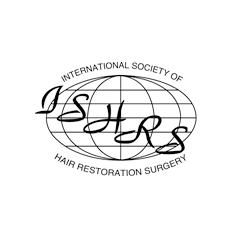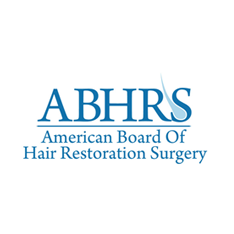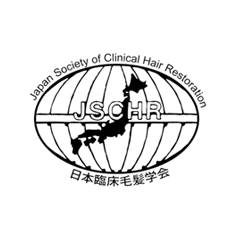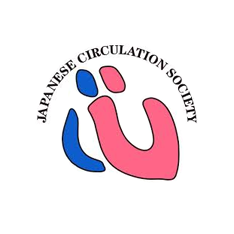Origins of Dermis may determine Different Responses to Androgens
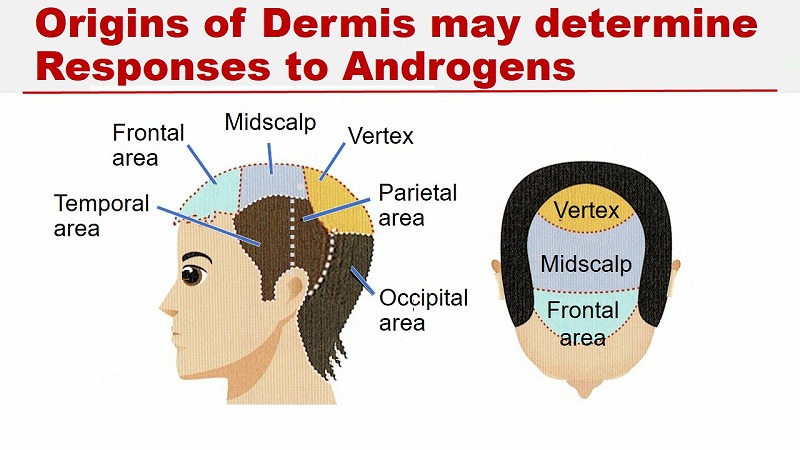
Scalp hair looks the same throughout the scalp area. However, there are two different types of hair follicles on the scalp.
Dermis in the frontal, mid-scalp and vertex areas is derived from the neural crest of the embryo in the early stage of pregnancy.
These are the target areas of hair loss caused by androgens in AGA.
On the other hand, dermis in the occipital, parietal and temporal areas is derived from the mesoderm of the embryo.
These are non-balding areas that do not lose hair thickness even after exposure to androgens.
It is believed that differences in the responsiveness of scalp hair to androgens in AGA are caused by the differences in embryonic origin.
Basic Research on Androgenetic Alopecia (AGA) (Vol.2)
Medical Treatment of AGA, Summary

This chapter provides basic information about the medical treatment of AGA using 5 alpha-reductase inhibitors and minoxidil.
Minoxidil is an anagen inducer that makes the anagen phase longer.
Since the action mechanism of minoxidil has nothing to do with male hormones, minoxidil may work effectively for the treatment of nonscarring alopecia caused by androgenic hormones and also other types of alopecia unrelated to male hormones such as diffuse and focal hair loss.
Finasteride and dutasteride are 5α-reductase inhibitors that reduce the conversion of testosterone to DHT.
Finasteride and dutasteride works effectively for the treatment of hair loss caused by androgenic hormones such as AGA.
Finasteride, dutasteride and minoxidil are important drugs for the treatment of AGA.
The feasibility of combination and dose adjustment of these drugs is an important issue in the individual treatment of AGA patients.
Genetic analysis may be able to find out which drugs work effectively for each patient before hair regrowth treatment begins.
In the near future, genetic analysis may make it possible to treat hair loss patients individually.
References

Olsen Elise: Disorders of Hair Growth. Diagnosis and Treatment, 2nd ed. McGraw-Hill, Medical Pub, NY. 2003.
Shapiro Jerry: Hair Loss: Principles of Diagnosis and Management of Alopecia, 1st ed. Martin Dunitz, London. 2002.
Copyrights
It is strictly prohibited to reprint unauthorizedly reproduced information on copyrighted works such as texts, images, and graphs existing on this website. If it exceeds the scope of the citation, we will take legal action. Please contact us when reprinting.


